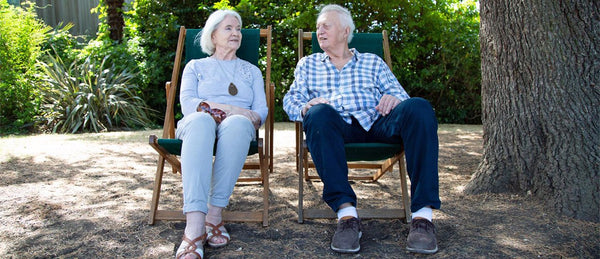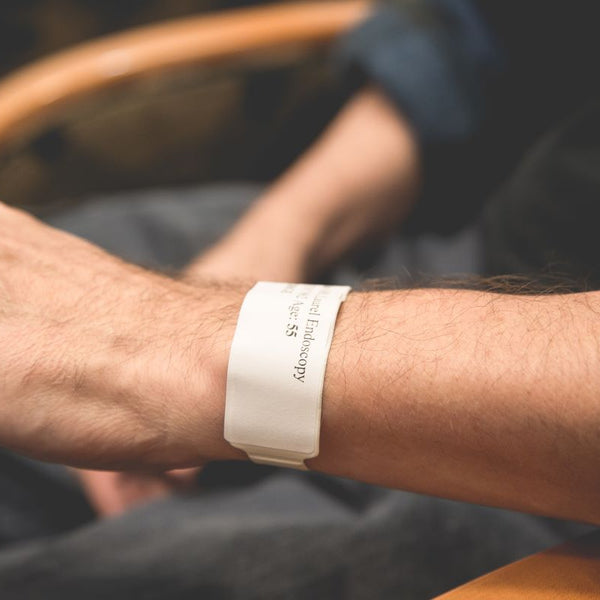The evolution of care innovations in personal alarms
The range of personal alarms has grown significantly in the last few years. Previously, older adults had limited options, often restricted to a simple red button alarm. These were functional and unattractive and choice was largely limited to a neck or wrist strap.
Today, personal alarm services evolved far beyond simple emergency buttons. These services help people live independently by using technology to detect emergencies and predict possible risks.
We were happy to join Luca from The Live In Care Company on their carers podcast. We talked about how new care technologies help people stay independent. This includes GPS alarms, automatic fall detection, and home monitoring systems.
Jo, an expert Independent Living Advisor from Taking Care, shared tips for families considering home care solutions. She explained how new care innovations are changing the future of independent living.
Empowering Independence: Innovations in Personal Alarms podcast from The Live In Care Company
The early days: Traditional personal alarms and their limitations
Traditional safety alarms used a simple pendant button that required manual activation. The systems relied on a base unit connected to the home’s telephone landline. The basic pendants had a limited range from the base unit, sometimes only 100 metres. Pressing the emergency button triggered the base unit to call a monitoring centre.
These devices had a short range. Users had to press the pendant button and be close to the base unit's microphone and speaker.

Many people often viewed the common red button design as a stigma of aging. Newer digital models are more attractive and have moved away from the reliance on analogue telephone landlines. The UK is upgrading its telephone network to digital and new digital alarms do not require a connection to a phone line.
A few years ago, the choice was very much home and garden alarm, a rather chunky, ugly box plugged in the home and a very basic button but we’ve moved on.
Jo Staveley,
Independent Living Advisor, Taking Care Personal alarms
Fall sensor technology
Fall detection was a major development. It automatically alerts the monitoring centre when a fall happens. This has significantly improved safety, especially for older adults prone to falls due to frailty or medical conditions.
The sensitivity and accuracy of these sensors have also improved. This is due to better algorithms and technology. These advancements help reduce false alerts from everyday movements, like sitting or lying down.
Fall detection is a no brainer when choosing an alarm, particularly for someone living on their own. They’ve got the reassurance of not only having a button to press for help but knowing it will alert us automatically if they have a hard fall.
Jo Staveley,
Independent Living Advisor, Taking Care Personal alarms
Predictive technology: The next generation of care innovations
The latest care innovations are seeing monitored alarms moving towards predictive care by using AI and data analytics to detect subtle changes in behaviour that could indicate a developing wellbeing issue.
We’re now seeing care innovations that don’t just respond to emergencies but help predict them, allowing families to act before a crisis happens. Predictive technology represents a major leap forward, offering a safety net that anticipates issues before they escalate, rather than simply reacting after an emergency has occurred.
If an older adult is typically active in the morning but stops using the kitchen, an alert can notify the family, prompting early intervention before a health decline.

Home monitoring systems and sensors can monitor activity levels and provide valuable insights into daily routines, helping families identify potential changes in behaviour or inactivity that may warrant further investigation. These innovative systems help families discreetly assess their loved ones’ wellbeing without making them feel intruded upon and preserving their independence.
We’ve recently launched something no other alarm provider has called ActiveAlert. We now analyse alarm call patterns and will give our customers a call if we notice changes in behaviour that is out of the ordinary.
Jo Staveley,
Independent Living Advisor, Taking Care Personal alarms
How care innovations are supporting carers
For family carers, modern personal alarms are more than just emergency buttons - they are an essential part of caregiving support. These devices provide peace of mind and reassurance that their loved ones are OK when they cannot be with them.
The latest GPS alarms will send the device's coordinates when someone triggers an alarm call, allowing help to reach the person in need quickly. This can be particularly important for people living with dementia if they wander or become distressed and confused.

In the carers podcast, Jo explains how remote monitoring allows families to stay informed. For example, you can set up the personal alarm watch with geofencing, which triggers an alert when the device moves outside a preset location.
For carers, having access to real-time location updates and alerts means they can balance their responsibilities with confidence, knowing their loved ones are safe.
Jo Staveley,
Independent Living Advisor, Taking Care Personal alarms
The future of personal alarms and care innovations
Personal alarms have come a long way, evolving from manual alert systems to intelligent, predictive care solutions that enhance independent living.
As technology continues to advance, care innovations will play an even greater role in supporting independent living. More advanced preventative technology, such as Taking Care Prevent, will support independence by managing your health and activity.
Watch the carers podcast with Jo to learn more about the latest developments in personal alarms and how they are helping families across the UK.
CTA: How to talk to Mum or Dad about getting a personal alarm
We’ve put together a step-by-step guide to help you talk to your elderly loved ones about the benefits of having a personal alarm.
Read our free guide





